In the vast world of gardening and landscaping, Hostas stand out as versatile and visually appealing plants. These lush, vibrant foliage plants are a staple in many gardens, adding a touch of elegance and charm. However, a lingering question often hovers in the minds of enthusiasts and curious onlookers alike: Are Hostas poisonous to humans? Let’s join Gina Farm into this query, debunking myths and shedding light on the true nature of these beloved plants.
Understanding Hostas: A Botanical Marvel
Hostas are popular perennial plants prized for their attractive foliage, versatility and ease of cultivation. Belonging to the family Asparagaceae, the genus Hosta comprises numerous species and these plants are commonly known as Hostas, plantain lilies, or funkias. Native to East Asia, primarily China, Korea and Japan, Hostas have become widely cultivated and appreciated by gardeners around the world.
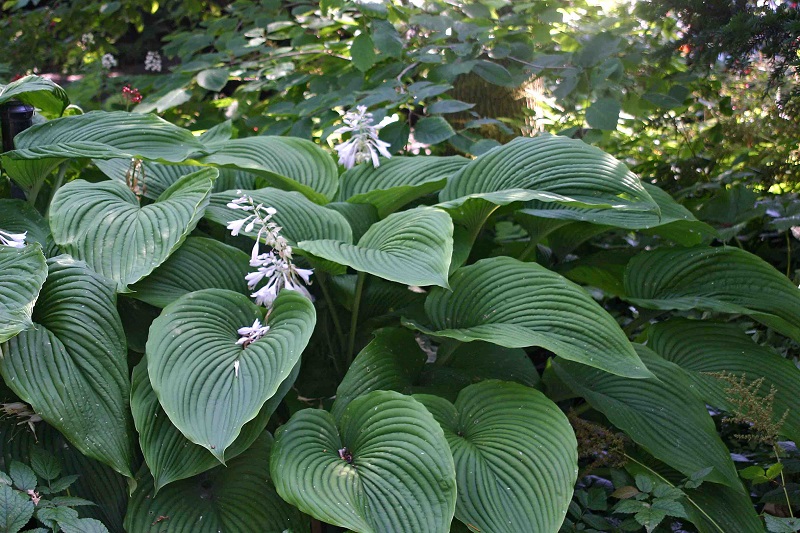
Types of Hostas plants
Hostas come in a wide range of varieties, each with its unique characteristics, including differences in size, leaf color, shape and texture. Here are some popular types of Hostas:
- Sum and Substance (Hosta ‘Sum and Substance’): Known for its large, bright gold leaves, Sum and Substance is one of the most popular and distinctive hosta varieties.
- Blue Angel (Hosta ‘Blue Angel’): This variety is prized for its huge, blue-green leaves. It forms an impressive mound and produces pale lavender flowers.
- June (Hosta ‘June’): Recognized for its striking variegated foliage, June has blue-green leaves with creamy yellow margins. It also produces lavender flowers.
- Patriot (Hosta ‘Patriot’): Patriot features deep green leaves with crisp white margins, creating a bold contrast. It produces lavender flowers in midsummer.
- Hosta ventricosa: This species is known for its upright, vase-shaped form and heart-shaped leaves. The foliage is typically green and it produces pale lavender flowers.
- Guacamole (Hosta ‘Guacamole’): With its large, glossy leaves that are chartreuse in the center and dark green at the edges, Guacamole adds a burst of color to the garden. It produces fragrant white flowers.
- Halcyon (Hosta ‘Halcyon’): Halcyon is a smaller hosta with blue-green, heart-shaped leaves. It’s valued for its intense blue color and tolerance of partial shade.
- Empress Wu (Hosta ‘Empress Wu’): One of the largest Hostas, Empress Wu has enormous green leaves and a robust, upright habit. It produces pale lavender flowers.
- Regal Splendor (Hosta ‘Regal Splendor’): This variety showcases blue-green leaves with irregular yellow margins. It produces lavender flowers and is known for its striking foliage.
- Francee (Hosta ‘Francee’): A classic hosta, Francee has dark green leaves with distinctive white margins. It forms a neat, compact mound and produces lavender flowers.
- Honeybells (Hosta ‘Honeybells’): This variety features golden-yellow leaves with green margins. It has a compact habit and produces lavender flowers.
- August Moon (Hosta ‘August Moon’): Known for its large, heart-shaped leaves that are bright gold in color, August Moon is a popular choice for adding a splash of sunshine to shady areas.
These are just a few examples and the world of Hostas includes countless cultivars with various leaf sizes, colors and patterns. When selecting Hostas for your garden, consider factors such as the amount of sunlight, soil conditions and the desired aesthetic. Additionally, combining different hosta varieties can create visually appealing and dynamic landscapes.
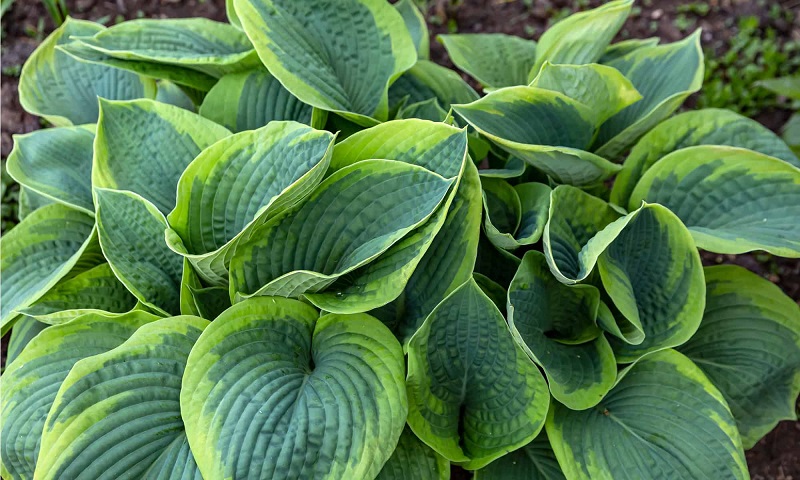
Are Hostas Poisonous To Humans?
Hostas are generally considered non-toxic to humans. Both the leaves and flowers of hosta plants are typically safe and are not known to pose a significant threat if ingested. However, it’s important to note that individual reactions to plants can vary and some people may be more sensitive or have allergies that could cause mild reactions.
While Hostas are not generally considered poisonous, it’s crucial to exercise caution with any plant material. Some parts of the hosta plant, especially the leaves, can contain substances that may cause mild irritation or digestive discomfort in some individuals if ingested.
If you have pets, such as dogs or cats, it’s worth noting that Hostas can be toxic to them. Ingesting certain parts of the hosta plant can cause symptoms like vomiting, diarrhea and, in severe cases, more serious health issues in pets. If you have pets and Hostas in your garden, it’s a good idea to be aware of potential risks and take measures to prevent your pets from consuming the plant.
As with any plant in your garden, it’s advisable to wash your hands thoroughly after handling Hostas, especially if you have sensitive skin or known allergies.
If you have specific concerns about the toxicity of plants in your garden or if you suspect someone, including a pet, has ingested a plant and is showing signs of illness, it’s best to contact a healthcare professional or a veterinarian for advice. They can provide guidance based on the specific circumstances and symptoms.
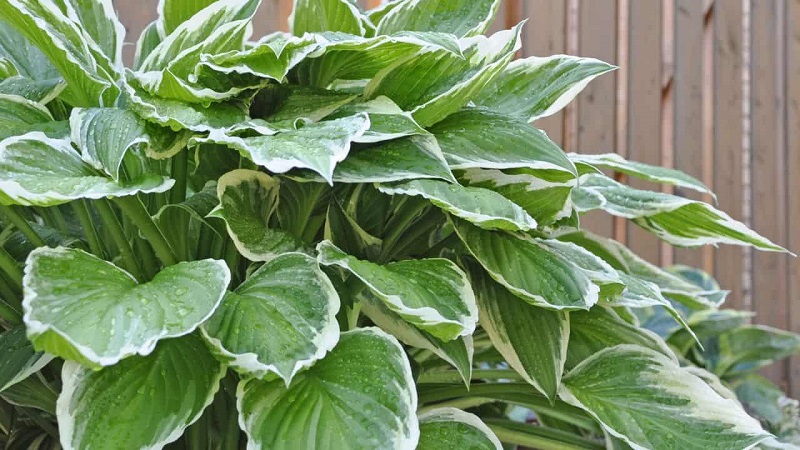
Are Hostas plants toxic to your pets?
Yes, hosta plants can be toxic to pets, particularly to dogs and cats. The exact level of toxicity can vary depending on the specific species or cultivar of hosta, as well as the individual pet’s size and sensitivity. The toxic components are primarily found in the leaves, but other parts of the plant may also pose a risk.
Hostas contain substances called saponins, which can cause gastrointestinal upset in pets if ingested. Symptoms of hosta poisoning in pets may include vomiting, diarrhea, lethargy, and loss of appetite. In more severe cases, ingestion of large quantities of hosta leaves can lead to more serious health issues.
If you suspect that your pet has ingested any part of a hosta plant and is exhibiting symptoms of poisoning, it’s essential to seek veterinary attention promptly. The veterinarian can assess the situation, provide appropriate treatment, and offer guidance on how to manage the effects of the ingestion.
To prevent accidental ingestion and potential poisoning, consider the following precautions:
- Monitor Pets: Keep an eye on your pets when they are outdoors, especially if hostas are present in your garden. Dogs, in particular, may be more prone to digging or chewing on plants.
- Fencing: Use fencing or other barriers to restrict access to areas where hostas are planted.
- Training: Train your pets to avoid eating plants and provide them with a safe and well-monitored environment.
- Awareness: Be aware of the specific plants in your garden and their potential toxicity to pets.
If you’re a pet owner and have hostas in your garden, it’s a good idea to be cautious and take measures to prevent your pets from consuming these plants. Always consult with a veterinarian if you have concerns about the safety of specific plants in your home or garden.
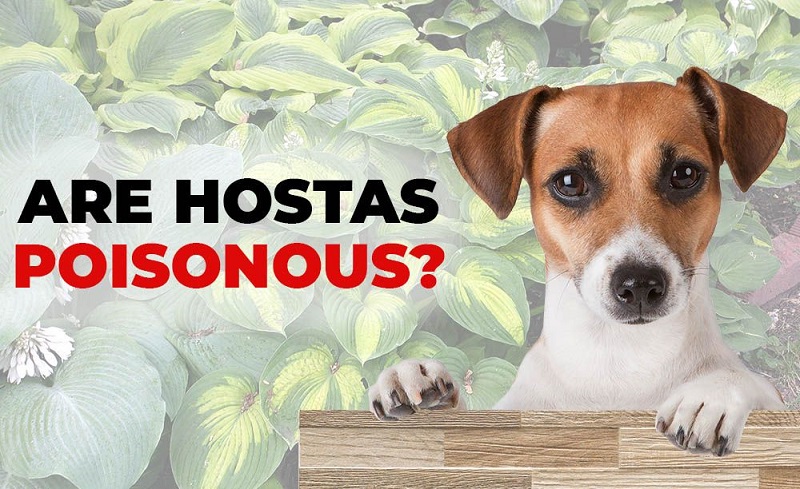
Are Hostas plants edible?
While Hostas are not typically grown or consumed as food, some varieties of Hostas are indeed considered edible and they have been used in certain culinary practices, particularly in East Asia. In Japan, for example, the young shoots of some hosta species are traditionally harvested and eaten as a vegetable. These shoots, known as “urui” or “uki” in Japanese, are often prepared by blanching or stir-frying.
It’s important to note that not all hosta varieties are edible and the edibility can vary among species and cultivars. If you are considering using Hostas in culinary applications, it’s crucial to positively identify the specific variety you have and confirm its edibility.
Here are some general guidelines and considerations:
- Edible Parts: The young shoots and emerging leaves of certain hosta varieties are the parts that are typically consumed. Older leaves may become tough and less palatable.
- Preparation: When using Hostas in cooking, it’s recommended to blanch or cook them before consumption. This can help reduce any bitterness and make the shoots more tender.
- Varietal Differences: While some Hostas are known for their edible shoots, others may have a bitter taste or contain substances that could cause discomfort if ingested. It’s crucial to know the specific variety you have and whether it is suitable for consumption.
- Avoiding Pesticides: If you plan to use Hostas as food, make sure they have not been treated with pesticides or other chemicals that may be harmful if ingested.
Before attempting to consume Hostas or any other plant, it’s advisable to consult reliable sources or local experts who can provide information about the specific varieties in your area. If you have any doubts about the edibility of a particular hosta variety, it’s best to err on the side of caution and avoid consuming it. Additionally, individuals with allergies or sensitivities should exercise caution and may want to consult with a healthcare professional before incorporating Hostas into their diet.

What dishes can the Hostas plant make?
While Hostas are not commonly used in mainstream Western culinary practices, certain varieties of Hostas have culinary applications, particularly in East Asian cuisines. Here are some traditional Japanese dishes where Hostas may be incorporated:
- Tempura: The young shoots of Hostas can be coated in a light tempura batter and deep-fried, creating a crispy and flavorful dish.
- Salads: Blanched or stir-fried hosta shoots can be used in salads, providing a unique and fresh addition to the dish.
- Stir-Fries: Hosta shoots can be stir-fried with other vegetables and seasonings to create a simple and nutritious side dish.
- Pickles: In some regions, hosta shoots are pickled to preserve them and enhance their flavor. Pickled hosta shoots can be served as a condiment or side dish.
It’s important to note that not all hosta varieties are suitable for culinary use and the edibility can vary among species and cultivars. Additionally, preparation methods such as blanching or cooking are often recommended to enhance the flavor and texture of hosta shoots.
If you are considering using Hostas in your cooking, it’s crucial to positively identify the specific variety you have and confirm its edibility. Ensure that the Hostas have not been treated with pesticides or other chemicals that may be harmful if ingested.
Before incorporating Hostas into your diet, it’s advisable to consult reliable sources or local experts who can provide information about the specific varieties in your area. Additionally, individuals with allergies or sensitivities should exercise caution and may want to consult with a healthcare professional before consuming Hostas or any other less common edible plants.
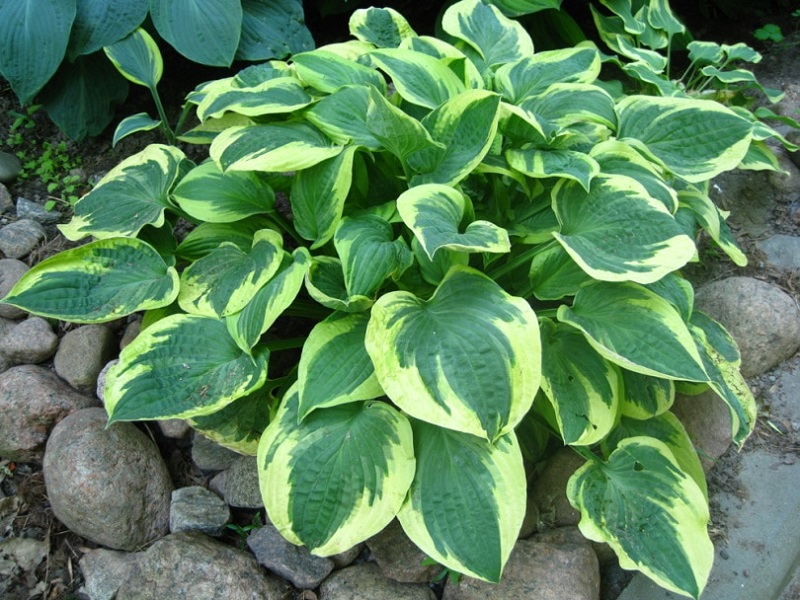
Conclusion: Embracing Hostas in Your Green Sanctuary
With the question “Are Hostas Poisonous To Humans?” then the answer is NO. These botanical wonders bring joy and beauty to gardens without posing any threat to gardeners. Understanding the nuances of hosta care, from optimal growing conditions to strategic garden design, ensures a vibrant and thriving green space.
As you embark on your gardening journey, let Hostas be the stars of your landscape, enchanting all who encounter their leafy allure. By dispelling myths and embracing the true nature of Hostas, you’re not only creating a visually stunning garden but also fostering a safe and enjoyable environment for both humans and their furry friends.